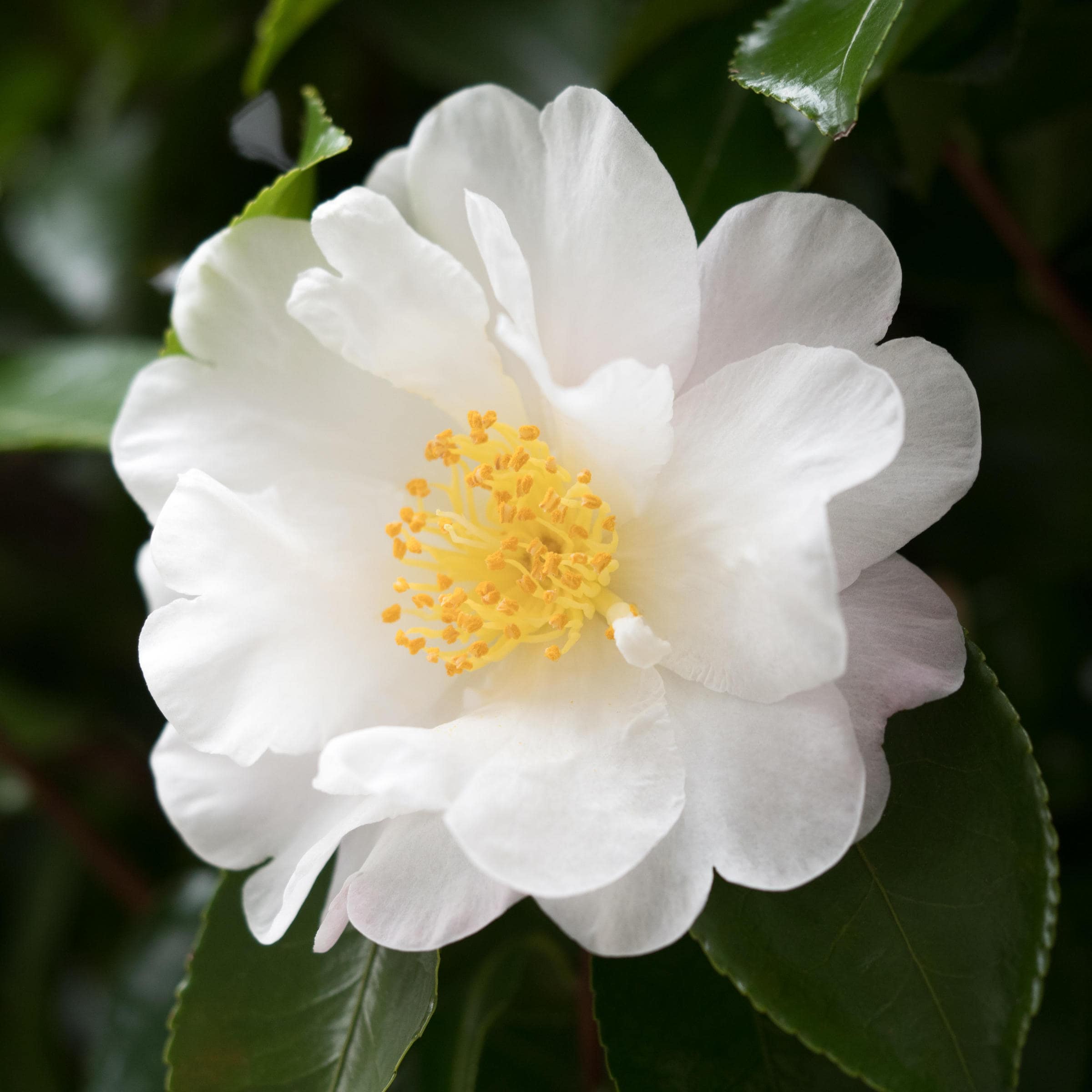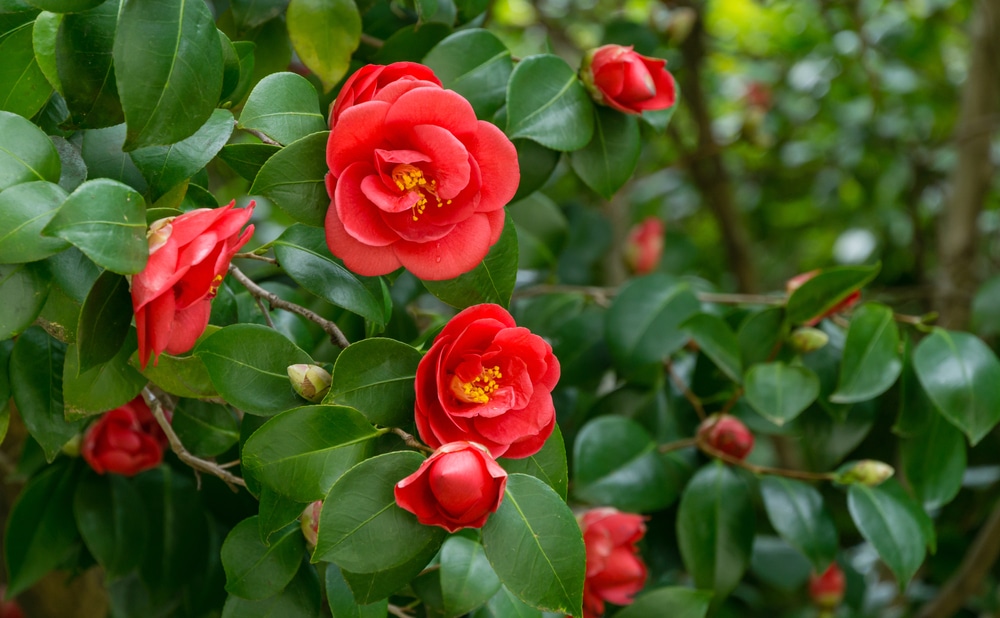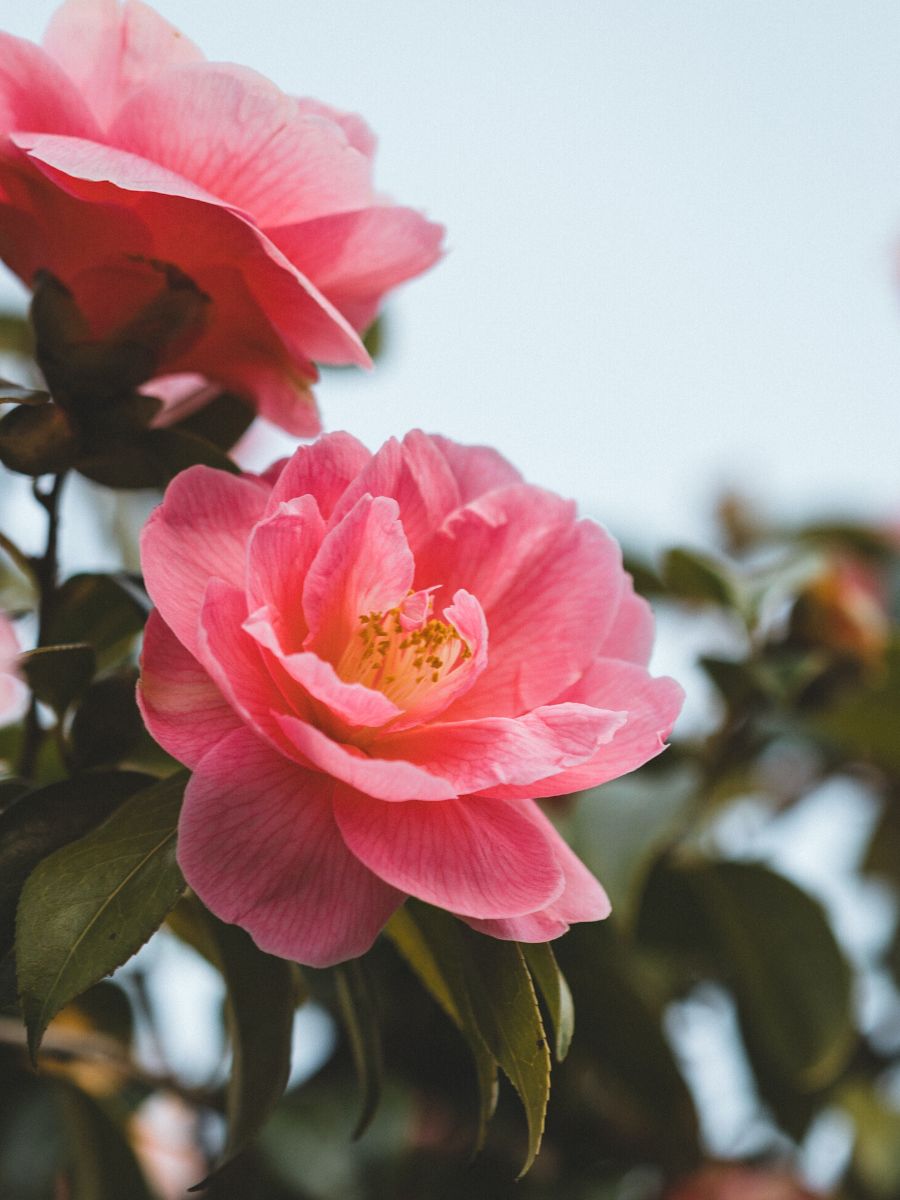Understanding Camellia’s Sunlight Requirements: Separating Fact from Fiction
Camellias are often misunderstood as requiring full sun, but the truth is that these plants have more nuanced needs. While they can tolerate some direct sunlight, they don’t necessarily require it. In fact, providing the right amount of sunlight is crucial for camellias to thrive. So, does camellia need full sun? The answer is not a simple yes or no. It’s essential to understand the specific sunlight requirements of camellias to provide the best care.
Camellias are native to Asia, where they grow in shaded forests and woodlands. As a result, they have adapted to thrive in conditions with partial shade. While some camellia varieties can tolerate more sun than others, most require protection from intense sunlight, especially during the hottest part of the day. Providing the right amount of sunlight is crucial for promoting healthy growth, preventing scorching, and encouraging blooming.
So, how much sunlight do camellias need? The ideal amount of sunlight for camellias varies depending on the climate, soil, and surrounding vegetation. In general, camellias prefer bright, indirect sunlight, especially during the morning and early afternoon. However, in warmer climates, it’s essential to provide some shade during the hottest part of the day to prevent scorching.
It’s also important to note that camellias have different sunlight requirements during different seasons. During the spring and fall, when the sun is not as intense, camellias can tolerate more direct sunlight. However, during the summer months, it’s essential to provide more shade to prevent scorching.
By understanding the specific sunlight requirements of camellias, you can provide the best care for your plants. Whether you’re growing camellias in containers or in the ground, providing the right amount of sunlight is crucial for promoting healthy growth and encouraging blooming. So, take the time to observe your camellias and adjust their sunlight exposure accordingly. With the right care, your camellias will thrive and provide beautiful blooms for years to come.
What is Full Sun, and Does Camellia Really Need It?
Full sun is often defined as six hours or more of direct sunlight per day. However, this definition can be misleading, as it doesn’t take into account the intensity of the sunlight or the specific needs of the plant. Camellias, for example, can tolerate some direct sunlight, but they don’t necessarily require full sun to thrive. In fact, providing too much direct sunlight can be detrimental to the plant’s health.
The key to understanding camellia’s sunlight needs is to consider the differences between morning sun, afternoon sun, and dappled shade. Morning sun is typically gentler and less intense than afternoon sun, making it a better option for camellias. Afternoon sun, on the other hand, can be intense and may cause scorching or discoloration of the leaves. Dappled shade, which is characterized by filtered sunlight, is often the best option for camellias, as it provides the right amount of light without causing damage.
So, does camellia need full sun? The answer is no. While camellias can tolerate some direct sunlight, they don’t require full sun to thrive. In fact, providing partial shade or dappled shade can be beneficial for the plant’s health and promote better growth and flowering. By understanding the specific sunlight needs of camellias, you can provide the best care for your plants and help them thrive.
It’s also important to note that the sunlight needs of camellias can vary depending on the climate and region. In warmer climates, it’s essential to provide more shade to prevent scorching, while in cooler climates, more sunlight may be necessary to promote growth. By considering the specific sunlight needs of your camellia and adjusting its exposure accordingly, you can help your plant thrive and enjoy its beautiful blooms.
How to Assess Your Camellia’s Sunlight Needs: A Step-by-Step Guide
Assessing your camellia’s sunlight needs is crucial to providing the right amount of light for optimal growth and flowering. Here’s a step-by-step guide to help you evaluate your camellia’s sunlight needs:
Step 1: Evaluate the Plant’s Current Location
Observe the amount of sunlight your camellia is currently receiving. Take note of the time of day and the duration of direct sunlight. If your camellia is receiving too much direct sunlight, consider providing shade or relocating it to a spot with filtered sunlight.
Step 2: Observe the Plant’s Responses to Sunlight
Monitor your camellia’s responses to sunlight over a period of time. Look for signs of scorching, such as yellowing or browning of the leaves, or signs of insufficient light, such as weak and spindly growth. Adjust the amount of sunlight accordingly to prevent damage or promote healthy growth.
Step 3: Consider Climate, Soil, and Surrounding Vegetation
Take into account the climate, soil, and surrounding vegetation when assessing your camellia’s sunlight needs. In warmer climates, camellias may require more shade to prevent scorching, while in cooler climates, more sunlight may be necessary to promote growth. Soil type and surrounding vegetation can also affect the amount of sunlight your camellia receives.
Step 4: Assess the Time of Year
Camellias have different sunlight needs during different times of the year. In the spring and fall, camellias may require more sunlight to promote growth and flowering, while in the summer, they may require more shade to prevent scorching. Adjust the amount of sunlight accordingly to meet your camellia’s changing needs.
By following these steps, you can assess your camellia’s sunlight needs and provide the right amount of light for optimal growth and flowering. Remember, the key to successful camellia care is to provide the right balance of sunlight, water, and nutrients. With a little observation and adjustment, you can help your camellia thrive and enjoy its beautiful blooms.
The Benefits of Partial Shade for Camellias: Why Less Sun Can Be More
While camellias can tolerate some direct sunlight, providing partial shade can be beneficial for their growth and health. In fact, many camellia varieties thrive in partial shade, where they receive dappled sunlight or morning sun. So, why is partial shade beneficial for camellias?
One of the main benefits of partial shade is reduced risk of scorching. Direct sunlight can cause the leaves to become scorched, leading to unsightly brown spots and reduced growth. By providing partial shade, you can prevent scorching and promote healthy growth.
Partial shade also improves soil moisture retention. When camellias are exposed to direct sunlight, the soil can dry out quickly, leading to water stress. By providing partial shade, you can reduce soil temperature and prevent moisture loss, ensuring that your camellia receives the water it needs.
In addition to these benefits, partial shade can also increase flower production. Many camellia varieties produce more flowers when they receive partial shade, as this allows them to conserve energy and focus on producing blooms.
Finally, partial shade can help prevent pests and diseases. When camellias are exposed to direct sunlight, they can become more susceptible to pests and diseases. By providing partial shade, you can reduce the risk of infestation and infection, promoting a healthier plant.
So, does camellia need full sun? The answer is no. While camellias can tolerate some direct sunlight, providing partial shade can be beneficial for their growth and health. By understanding the benefits of partial shade, you can create a sun-friendly environment for your camellia and promote healthy growth and flowering.
Camellia Varieties and Their Sunlight Tolerances: A Brief Overview
Camellias are a diverse group of plants, with over 200 species and countless hybrids. While some camellia varieties can tolerate full sun, others prefer partial shade or dappled sunlight. Understanding the sunlight tolerance of your camellia variety is crucial to providing the right amount of sunlight for optimal growth and flowering.
Camellia japonica, for example, is a popular variety that can tolerate full sun to partial shade. It is a robust and adaptable plant that can thrive in a range of sunlight conditions. On the other hand, Camellia sasanqua is a more delicate variety that prefers partial shade to dappled sunlight. It is a more sensitive plant that can be scorched by intense sunlight.
Other camellia varieties, such as Camellia reticulata and Camellia saluenensis, prefer partial shade to dappled sunlight. These plants are more sensitive to sunlight and can be scorched by intense sunlight. However, they can thrive in partial shade, where they receive filtered sunlight.
It’s essential to research the specific sunlight tolerance of your camellia variety to provide the right amount of sunlight. By understanding the sunlight needs of your camellia, you can create a sun-friendly environment that promotes healthy growth and flowering.
In addition to researching the sunlight tolerance of your camellia variety, it’s also essential to observe your plant’s responses to sunlight. By monitoring your camellia’s responses to sunlight, you can adjust its sunlight exposure to meet its specific needs.
By providing the right amount of sunlight for your camellia variety, you can promote healthy growth and flowering. Remember, the key to successful camellia care is to provide the right balance of sunlight, water, and nutrients. With a little research and observation, you can create a sun-friendly environment that meets the specific needs of your camellia variety.
Creating a Sun-Friendly Environment for Your Camellia: Tips and Tricks
Creating a sun-friendly environment for your camellia is crucial to promoting healthy growth and flowering. Here are some tips and tricks to help you create a sun-friendly environment for your camellia:
Use Shade Cloth: Shade cloth is a great way to provide filtered sunlight for your camellia. You can place the shade cloth over the plant or attach it to a trellis to create a shaded area.
Install Trellises: Trellises can provide support for your camellia and create a shaded area. You can train your camellia to grow up the trellis, providing it with the right amount of sunlight.
Select Companion Plants: Companion plants can provide dappled shade for your camellia. Choose plants that have a similar sunlight requirement to your camellia, such as ferns or hostas.
Use Mulch: Mulch can help retain soil moisture and regulate soil temperature. This can help prevent scorching and promote healthy growth.
Avoid Intense Afternoon Sun: Intense afternoon sun can be detrimental to your camellia. Try to provide shade during this time, either by using shade cloth or moving the plant to a shaded area.
Monitor Sunlight Exposure: Monitor your camellia’s sunlight exposure and adjust it accordingly. If you notice that your camellia is receiving too much sunlight, provide shade or move it to a shaded area.
By following these tips and tricks, you can create a sun-friendly environment for your camellia. Remember, the key to successful camellia care is to provide the right balance of sunlight, water, and nutrients. With a little creativity and experimentation, you can create a sun-friendly environment that meets the specific needs of your camellia.
Common Mistakes to Avoid When Providing Sunlight for Camellias
When providing sunlight for camellias, there are several common mistakes to avoid. These mistakes can lead to scorching, reduced growth, and decreased flower production. By understanding these mistakes, you can provide the right amount of sunlight for your camellia and promote healthy growth and flowering.
Placing Camellias in Areas with Intense Afternoon Sun
One of the most common mistakes is placing camellias in areas with intense afternoon sun. This can cause scorching and reduce growth. Instead, place your camellia in a location that receives morning sun or dappled shade.
Failing to Provide Sufficient Shade During Heatwaves
Another mistake is failing to provide sufficient shade during heatwaves. Camellias can be sensitive to extreme temperatures, and heatwaves can cause scorching and reduced growth. Provide shade for your camellia during heatwaves to prevent damage.
Neglecting to Adjust Sunlight Exposure During Different Seasons
Camellias have different sunlight requirements during different seasons. Neglecting to adjust sunlight exposure can lead to scorching or reduced growth. Adjust the amount of sunlight your camellia receives based on the season to promote healthy growth and flowering.
By avoiding these common mistakes, you can provide the right amount of sunlight for your camellia and promote healthy growth and flowering. Remember, the key to successful camellia care is to provide the right balance of sunlight, water, and nutrients. With a little attention and care, you can create a sun-friendly environment that meets the specific needs of your camellia.
Conclusion: Finding the Perfect Balance of Sunlight for Your Camellia
Finding the perfect balance of sunlight for your camellia is crucial to promoting healthy growth and flowering. By understanding the importance of sunlight for camellias and avoiding common mistakes, you can create a sun-friendly environment that meets the specific needs of your plant.
Remember, camellias are often misunderstood as requiring full sun, when in fact they have more nuanced needs. By providing the right amount of sunlight, you can promote healthy growth, prevent scorching, and encourage blooming.
Experiment and observe your camellia’s responses to different sunlight conditions. Take note of how your plant responds to morning sun, afternoon sun, and dappled shade. Adjust the amount of sunlight your camellia receives based on its responses and the time of year.
By following the tips and tricks outlined in this article, you can create a sun-friendly environment that promotes healthy growth and flowering. With a little attention and care, you can help your camellia thrive and enjoy its beautiful blooms.
So, does camellia need full sun? The answer is no. While camellias can tolerate some direct sunlight, they have more nuanced needs that require attention and care. By understanding the importance of sunlight for camellias and creating a sun-friendly environment, you can promote healthy growth and flowering and enjoy the beauty of these stunning plants.



:strip_icc()/pink-camellia-japonica-kramers-supreme-40e29ed1-419f881d94be44449d8187ac13017981.jpg)



:max_bytes(150000):strip_icc():format(webp)/camellia-flowers-1316021-2-5404a97057f043e1964736850989f7d6.jpg)
